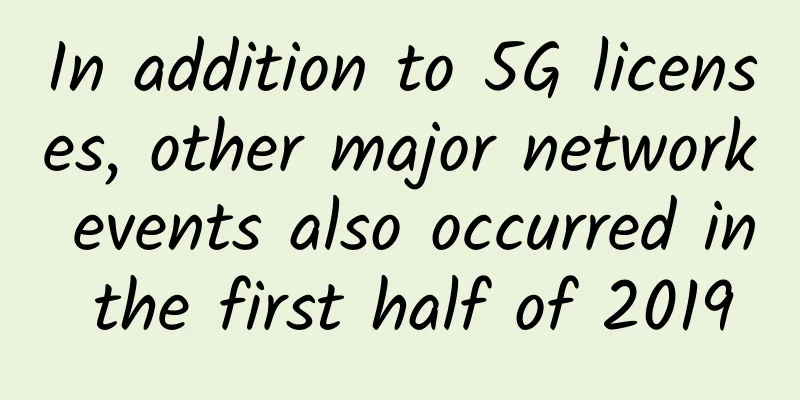25 years later, the CDMA legend ends

|
On June 12, South Korea's Ministry of Science and ICT officially approved South Korean operator SK Telecom to gradually stop 2G CDMA communication services. Due to frequent network failures caused by aging equipment and the inability to repair equipment due to insufficient spare parts, the Korean Ministry of Science and ICT believes that the 2G CDMA network has a high risk of failure and is no longer suitable for continued operation. Since South Korea's SK Telecom launched the world's first CDMA commercial network in January 1996, CDMA has created a mythical miracle in South Korea. Once a powerful force, it is now coming to an end. This is undoubtedly a landmark event that is destined to be recorded in the history of mobile communications, and it is also a cause for great emotion. Now let us go back 25 years. Before the development of CDMA, South Korea's communications industry was quite weak, and all communications network equipment and terminals were imported from abroad. In 1990, when the world was evolving from the 1G analog era to the 2G digital era, the South Korean government made a very bold decision - to introduce CDMA technology. In November 1990, the Electronics and Telecommunications Research Institute (ETRI) of Korea and Qualcomm signed a CDMA technology transfer agreement, and the two parties cooperated to develop CDMA commercialization technology. This was an extremely risky decision. At that time, 2G was just starting out, and most countries and manufacturers around the world focused their attention on the GSM standard proposed by Europe, while few people paid attention to Qualcomm's CDMA technology in the United States. There are two reasons for this: first, CDMA technology is more advanced and more difficult to implement commercially; second, Qualcomm's patent wall has blocked many companies. A country with such a weak communications foundation actually chose the most challenging technology. At that time, industry insiders were skeptical about South Korea's decision. Faced with doubts and challenges, South Korean communications engineers began to work overtime day and night to promote the commercialization of CDMA technology. On April 17, 1994, ETRI Laboratory successfully made the first call based on the CDMA system. Subsequently, Korea Mobile Communications (the predecessor of SK Telecom) deployed a trial network of more than 200 CDMA base stations in Seoul. Moving from laboratory to commercial use is an even more difficult task. According to colleagues who participated in the deployment of SKT's CDMA trial network at the time, they had to stay up late almost every night in order to test and optimize the more than 200 base stations. Finally, on January 3, 1996, SK Telecom launched the world's first CDMA service, and South Korea became the first country in the world to commercialize CDMA. In 1997, SK Telecom expanded CDMA commercial services to the whole of South Korea and began to provide short message services in August of the same year. Subsequently, CDMA developed rapidly in South Korea. In March 1997, the number of CDMA users reached 1 million. In August 1997, it reached 2 million. In December 1999, it exceeded 10 million. SK Telecom became the world's largest CDMA operator at that time. What is more noteworthy is that through the transfer and industrialization of CDMA technology, Korean telecommunications equipment and terminal manufacturers represented by Samsung and LG have emerged as a new force, making significant contributions to the localization and export of Korean telecommunications equipment and terminals. Research results from Korea's ETRI show that CDMA has created 260,000 jobs in Korea and generated a substitution effect of 13 trillion won. South Korean media believe that starting from 2G CDMA, South Korea has gradually transformed from a country importing mobile communication equipment and terminals to a major exporter, becoming a leading country in global mobile communication technology. Officials from South Korea's Ministry of Science and ICT believe that CDMA is the foundation for the rise of South Korea's communications industry. Based on this, South Korea has gradually become a telecommunications power and continues to lead in 3G, 4G and 5G. It is no exaggeration to say that the commercial use of CDMA in South Korea saved Qualcomm and also made the South Korean communications industry a success. When CDMA was first introduced, Qualcomm was just a small company, but it has since grown into a global multinational corporation. South Korea has also grown into a communications powerhouse starting with CDMA. An era ends and a new era begins. Now that we have entered the 5G era, the Korean 2G CDMA myth has officially bid farewell to the historical stage. How can we not feel deeply moved? In the 5G era, where and when will the Korean CDMA-style myth be staged? |
<<: 230,000 new cases every day: How they are "used by 5G"
Recommend
China Unicom: 5G package users reach 113 million
Recently, China Unicom officially announced its 2...
Teach you how to accurately calculate the I2C pull-up resistor value
[[438676]] How many devices can be connected to t...
Blockchain, IoT and 5G
5G networks are starting to roll out across the U...
Fundamentals of Data Center Operations Planning
Enterprises need to develop an effective and adap...
Alipay and WeChat are included in UnionPay clearing
As the deadline for the payment industry to "...
5G technology has just emerged, so don’t rush to pour cold water on it
After 3G and 4G have successively gone from unfam...
If you write CRUD every day, it’s time to connect the system to the API gateway!
Today I will share with you some knowledge about ...
Exploration and practice of multi-link transmission technology in Volcano Engine RTC
Traditional data transmission methods mostly use ...
New infrastructure: Should we pursue this biggest “trend” in 2020?
If you want to find a keyword that can dominate t...
Deploy Nginx Plus as API Gateway: Nginx
Learn how the famous Nginx server (an essential f...
Fiber optic communication speed breaks record! It can transmit 1.84Pbit per second, twice the total global Internet traffic
This article is reprinted with permission from AI...
What are the advantages of Wi-Fi HaLow? Why is it the future of IoT Wi-Fi?
Connectivity is critical to every aspect of our l...
OneTechCloud offers 10% off on all items, US CN2 GIA high-security VPS with monthly payment starting from 31 yuan
OneTechCloud has released this month's promot...
Stay at home during the Labor Day holiday to watch TV series and play games. Learn how to set up WiFi network and say goodbye to lag
Although the current prevention and control level...
Towards the next generation of Internet, SoundNet releases full-link acceleration FPA to increase QoS protection for the Internet
On August 19, Agora held an online product launch...









